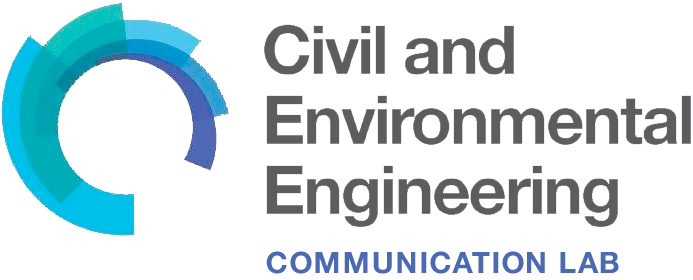 You are close to finishing your dissertation and want to continue research as a postdoc. Perhaps you have a partner and you need to carefully select a mutually agreeable geographic location. Maybe you have a PI in mind, but they cannot guarantee funding for you. Postdoctoral fellowships can solve many of these problems because they provide the freedom to choose the research topic, PI, and/or location (though these details often need to be declared before submitting an application).
You are close to finishing your dissertation and want to continue research as a postdoc. Perhaps you have a partner and you need to carefully select a mutually agreeable geographic location. Maybe you have a PI in mind, but they cannot guarantee funding for you. Postdoctoral fellowships can solve many of these problems because they provide the freedom to choose the research topic, PI, and/or location (though these details often need to be declared before submitting an application).
Of course, the odds of receiving postdoctoral fellowships are not high (typically single digit percentages). Knowing these odds, I applied for eight fellowships: four through university departments and four through government agencies. I initially felt like I had no idea how to be successful, especially since I received none of the 12 doctoral fellowships I had previously applied for. I also had a rough start: my first postdoctoral fellowship application was rejected a month after submission for being slightly out of scope. It certainly required mental fortitude to continue through this application process.
After speaking with colleagues in my field, common themes emerged in how they approach proposals, especially in how to write a stand-out research statement. At this point starting the fifth year of my PhD, I understood the importance of conveying a strong vision in my research statement: it is essential for getting and staying funded regardless of how stellar one’s publication record is. While I knew the motivation and methodology well, my colleagues taught me that conveying my vision in a convincing, focused, and exciting way for other scientists is a different matter. I believe their collective advice was pivotal to improving my research statement and ultimately getting me on the “funded” pile for three of the eight fellowships. I share some of these insights here.
1) Why now? Why me? When formulating your idea, focus on ensuring that your proposal answers why this research should be completed right now, as opposed to anytime. Many committees strongly weigh how much of a priority your research question is. The best introductions will extend beyond an informative literature review and directly state why answering your question is necessary and urgent.
They also want to know: why are you the best person to address this problem as opposed to someone else? Explicitly sell your fit to your research problem and your vision. Lean on your PI choice here – PIs can fill in any technical knowledge gaps and provide complementary tools to those learned during your PhD.
Most surprising to me is how much focus you need place on “why now? why me?” in your motivation. There is no fixed number, but be sure you spend more real estate motivating why the problem and approach is so amazing rather than on addressing every pitfall with your research question and approach.
2) Your audience is broader than you think. Many proposal writers will incorrectly assume (like I initially did) that their committee will include that harsh reviewer of their journal articles who can identify all methodological shortcomings. Rather than trying to defend against this omniscient and unlikely reader, keep the focus on convincing a researcher of an adjacent field that your questions and approach are spectacular. An excellent research statement will ultimately excite any researcher enough to fund the work.
Another nuance to consider: postdoctoral fellowships are mainly offered through federal government agencies (i.e., NSF, NIH, etc.) and specific university departments. Government-based fellowships will be reviewed by researchers closer to your field (but not quite as close as that of a journal article review). In this case, lean slightly towards convincing them that you understand the limitations of the approach and that your background fits the problem. By contrast, university departmental fellowships will typically have committees of professors that will not be in your exact field. For this audience, lean towards exciting them with an accessible, clear problem motivation, provide only a broad overview of the methods you would use, and be very brief.
3) Spend time just thinking: resist the urge to open Microsoft Word and start typing. Spend time purely thinking and schematically charting out your research problem and anticipated results. If you sufficiently plan, the statement will write itself.
4) Less is more: your reviewers are just as busy as you are. They want to see your main idea fast. You may see a ten page limit and feel an urge to cram in as much material as possible. I did this initially, but the statement will quickly become noisy. Instead, prioritize reader friendliness. This means more pictures and less walls of text. Reviewers are thankful for 1.5 spacing, 12 point font, and schematic figures with question marks and arrows that clearly convey your research questions. Use parsimony in discussing methods – mention only the essential methods and main anticipated challenges.
5) Start early: I started formulating my research statement in June 2020. My first deadline was in early August 2020. While this seems early to start, it was not! Give yourself at least two months before your first fellowship deadline to formulate a problem with your prospective PI (or any co-PIs) and write your statements. Provide adequate time for your PI(s) to provide feedback on your ideas and statements. If applying to multiple fellowships with different PIs and/or different project topics, start even earlier.
Lastly, I encourage asking your colleagues for help. Folks around you regardless of career stage have likely spent a significant portion of their time writing research statements. The MIT Communication Lab was a great source of help for me that I used multiple times! Don’t be afraid to ask for help. I was always glad I did.
Additional resources
Check out the full collection of free CommKit Resources created by the MIT CEE Comm Lab team.
